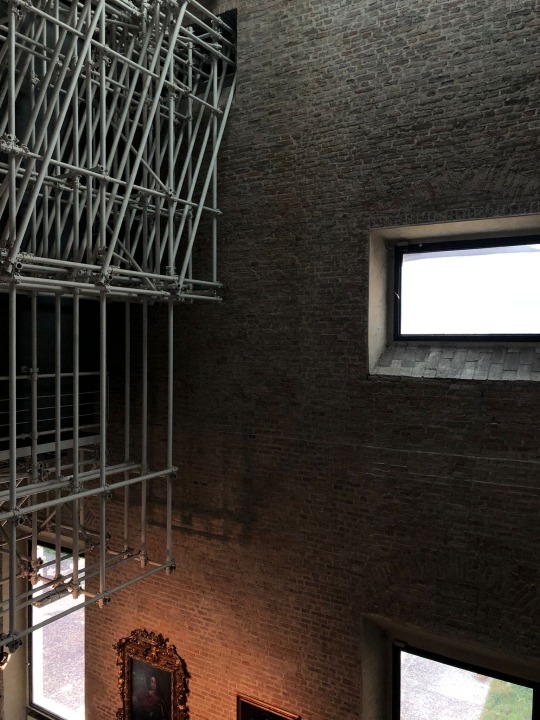#palazzo della pilotta
Text




palazzo della pilotta, parma / may 2024
15 notes
·
View notes
Text
Dioniso con satiro
Galleria Nazionale
Palazzo della Pilotta di Parma, Italia
Ph: Nos dejò

58 notes
·
View notes
Note
Fav movie you've watched recently?
Hello hellooooooooooooooooo!!! Aaaaaa oh dear, you just opened my pandora's box👁️
Recently I happened to watch lots of 60's, 70's and 90's movies (I'm destined to ever cross paths with vintage memorabilia. and the more I discover. The more I crave.) but some that most made me perk up my eyes and ears (can eyes be perked?) are:
First movie!
RATATAPLAN, Maurizio Nichetti, 1979
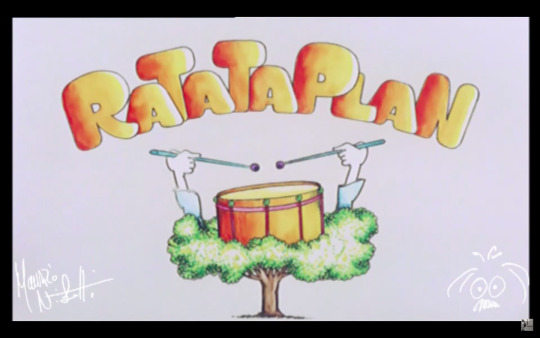


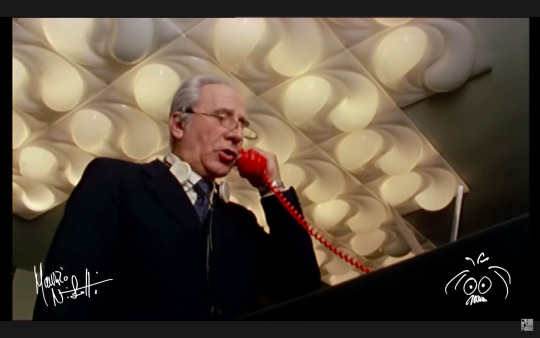



I discovered this gem very recently and unfortunately I haven’t even finished watching it (sigh sob sigh I got so little free time rightnow)
Made on a very low budget and being the directorial debut for Maurizio Michetti, this film had a huge success when it arrived in Italian cinemas.
The story follows slices of the life of the neo graduate engineer Colombo, who through tormentedly absurd comic gags, yet unquestionably full of small human injustices (and social), undeterred, he searches occupations to make ends meet.
What made me fall with this story of 'little failures happening in the course of our daily life' -- besides the pure comic skits that come out from every corner while you least expect it (or when you expect it; but you laugh anyway because the consequences are usually an even greater disaster that the one expected) -- is the fact that the film it's almost a 'silent movie', or rather, follows the rules of the 'Mr Bean conlang" (yes, I now created a new term) with the help of of a very narrow Italian vocabulary and excerpts of other languages, all this surrounded by a varied brocade of onomatopoeic sounds "(…) making the dubbing of the film almost superfluous." {source | wikipedia|Italian}
(Also the movie's opening is so incredible , Engineer Columbo is the true shape of our contemporary hero because i say so, also it gives off strong middle seventies vibes
Second movie Miniseries!
Orlando furioso, Luca Ronconi, 1975
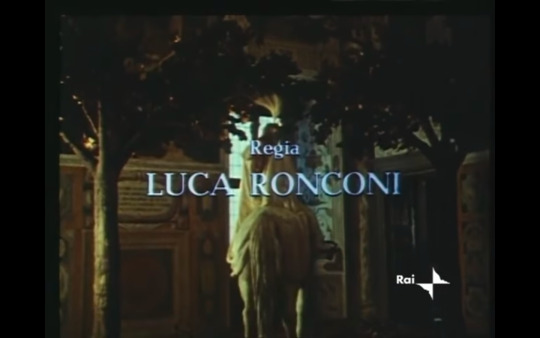
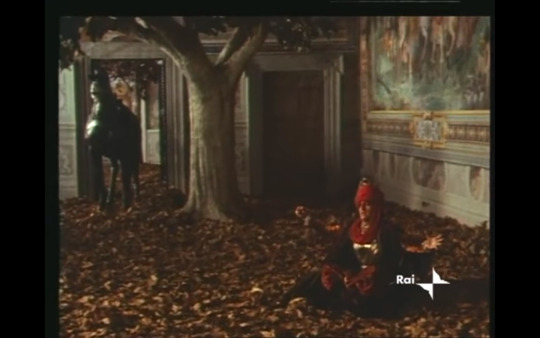
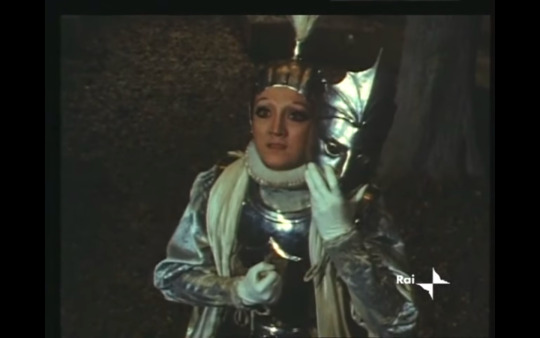



Born on the wave of discreet success that arose from the homonymous theatrical version of Luca Ronconi (made after Ludovico Ariosto's chivalric romance epic poem Orlando Furioso), the script meant for the theatre was rewritten to accommodate a television production (divided in five episodes) alas by depriving the work of the original's immersivity that it gained by including the public during the action happening on the stage; while also letting mutiple simultaneous scenes happening in the same theatre's room so the public could personally choose the way to follow the storytelling happening in front of their eyes. {sources |cinemedioevo.net| Wikipedia| Italian}
Some of the details that makes the television version so fascinating is that it was shot in multiple castles, basilicas and palaces'… interiors! (Palazzo Farnese, Terme di Caracalla, Basilica di Santa Maria in Cosmedin, Teatro Farnese and Palazzo della Pilotta di Parma. {sources |Wikipedia|Italian}). Maintaining the use of scenography and manners of acting suited for the theatre world, the series creates a sort of epic fairytale dream time bubble, even through the use of machinery for the mobilization of carousel-like horses and mythical beasts (choosing purposely to let the viewer see the 'magic' that makes the beast fly or the horses roll run!).
Extreme pantomime, actors flailing arms and bodies like opera singers. This extraordinaire work of art is for those who wish to spend some hours of dreamlike feverish visions of knights, magicians and bridesmaids in otherwordly costumes that seem to have come to life from medieval tapestries.
I searched aimlessly for possible dubbed or subtitled versions in other languages than italian. I can only come back from my quest by humbly offering open handed the original.
Whenever you can or can't follow all this medieval Italian versify, I would give it a try just to have a peek into this extremely seventies-born madness! Here's an article that talks about the touring theatre version (Italian)
Now a bit of spam


Mechanical beasts! Mechanical beasts! Hippogriph and the Orca (killer whale) di Ebuda
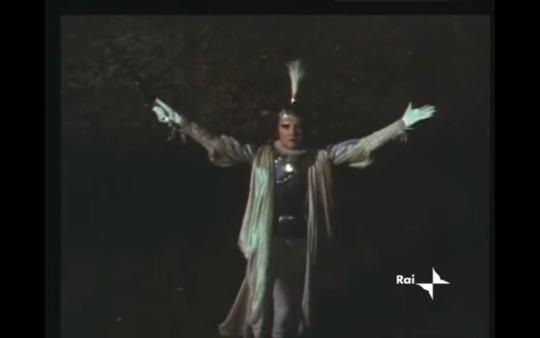



Also in this house we stan my sister in Christ (literally) knight warrior Bradamante
#the lad talks#Orlando furioso#ludovico ariosto#Luca Ronconi#Orlando furioso miniseries#Ratataplan#Maurizio Nichetti#(also I discovered that Ronconi's miniseries isn't on the official national broadcasting's streaming platform- and that makes me very angry#(it only exists 'officially' on dvd)#whew. it took me a while to respond!#I feel so blessed by receiving questions regarding movies! Thank you thank you for this given possibility for freely infodumping!#miniseries#MOVIES!!!#SERIES
6 notes
·
View notes
Photo

ab. 1547 Gerolamo Mazzola Bedoli - Pierluigi Farnese
(Galleria Nazionale di Parma / Palazzo della Pilotta)
109 notes
·
View notes
Text

TÍTULO: Rapto de Helena
AUTOR: Jacopo Zanguidi conocido como Bertoja
FECHA: c. 1566-1568
TÉCNICA: Óleo sobre yeso transferido al lienzo
DIMENSIONES:
ORIGEN: Parma, Palazzo del Giardino
INVENTARIO: 898
Este fresco con Marte y Venus es parte de un grupo de cinco fragmentos de una habitación en el Palazzo del Giardino, el llamado "palacio más allá del agua" hecho para el duque Ottavio Farnese a partir de 1561.
Los frescos fueron separados en 1767, cuando el arquitecto Ennemond Petitot recibió el encargo de renovar la villa por el duque Felipe de Borbón y modificó el diseño del siglo XVI de la residencia.
En esta escena las figuras ágiles y sutiles que se mueven a caballo como en una secuencia animada del primer al segundo piso, para dar la idea de un escape, no es seguro que puedan aludir a la historia del Rapto de Helen. El caballo, un animal constante en los frescos del artista, parece evocar aquí al galope Pegaso con el héroe mitológico, representado en uno de los paneles de la habitación de Perseo, similar para el vuelo del caballo y el casco emplumado.
La extraordinaria modernidad de Bertoja también se encuentra en estos fragmentos, en los que la redacción pictórica recuerda a los temas de los otros ciclos que pintó al fresco en el Palazzo del Giardino, como en la Sala del Bacio, donde las figuras alargadas según la "manera" tomada del Parmigianino parecen flotar en el espacio entre rocas, cuevas y paisajes fantásticos. Los rasgos estilísticos y la redacción cromática que parece disolver las formas con resultados más cercanos al período juvenil alrededor de 1566, justo después de la realización de la Madonna della Misericordia della Galleria.
Información e imagen de la web del Conjunto monumental de la Pilotta, Parma.
3 notes
·
View notes
Text
Rome Vacation Planner: Top Landmarks, Food, and Hidden Gems
Landmarks 🇮🇹⛲️🌳








Pantheon The Pantheon, an architectural marvel with the world’s largest unreinforced concrete dome, features a circular interior despite its square façade. It serves as a burial site for notable figures like Raphael and Vittorio Emmanuel II. Its design allows a perfect sphere to fit within the dome, and it has served various religious functions over the centuries.
Piazza Navona This vibrant square is renowned for Bernini’s Fountain of Four Rivers, which symbolizes major rivers and includes allegorical figures. The square also houses other fountains with intriguing designs, adding to its historical charm.
Monument to Vittorio Emanuelle II A grand monument offering panoramic views of classical Rome, including the Capitoline and Palatine Hills. It stands as a tribute to Italy’s first king and provides stunning views of the city’s historical layers.
Roman Forum The Forum is a well-preserved marketplace from ancient Rome, notable for its fire-resistant construction. Trajan’s Column, a significant monument within the Forum, showcases victories and architectural innovation.
Marcellus Theater An ancient theater that once accommodated 20,000 people, marking the entrance to the Jewish ghetto. It represents the scale and grandeur of Roman entertainment venues.
Spanish Steps Iconic and often crowded, the Spanish Steps lead to the Villa Borghese. They offer a popular spot for tourists to enjoy panoramic city views and access the adjacent park.
Villa Borghese A large park near the Spanish Steps, ideal for leisurely bike tours. It features beautiful gardens and paths, providing a relaxing escape from the city’s hustle.
Trastevere A charming neighborhood known for its winding streets and the Piazza di Santa Maria with its mosaic ceilings. It’s a delightful area to explore and enjoy local atmosphere.
Mouth of Truth A famous sculpture known for the legend that it bites off the hands of liars. It’s a popular photo spot, though often crowded.
Trevi Fountain A baroque masterpiece by Bernini, renowned for its elaborate design and the tradition of tossing coins to ensure a return to Rome.
Four Fountains Located at an intersection, these fountains represent rivers and gods, reflecting Rome’s rich artistic and symbolic heritage.
Vatican Museums and St. Peter's Basilica The Vatican Museums are renowned for their vast collection of art and historical artifacts, including Michelangelo’s Sistine Chapel ceiling. St. Peter’s Basilica, the world’s largest Roman Catholic church, houses notable works such as Michelangelo’s Pieta and provides a significant historical and spiritual site. The Vatican also features gardens, a golden sphere sculpture, and notable architecture.
Hidden Gems 💎✨


Via della Pilotta A beautiful street with archways, noted for its picturesque appearance during the night strolls.
Chiesa di Santa Maria della Vittoria This church houses Bernini’s Ecstasy of Saint Teresa, a dramatic sculpture within a theatrical setting. It’s known for its elaborate interior.
Palazzo Quirinalle The presidential palace with grand architecture and obelisks. It’s an impressive site in Rome’s political center.
Chapter Roma Hotel The Chapter Roma Hotel offered a convenient location and early check-in. Breakfast included espresso shots, mozzarella cheese balls, and scrambled eggs cooked with olive oil. The hotel’s breakfast was complemented by fresh salads with balsamic vinegar and tomatoes.
Food🍨🐟


La Pesceria Barberini A seafood restaurant known for its fresh offerings.
Origano Trevi A dining spot famous for its artichokes and other Italian dishes, contributing to the local culinary scene.
Two Sizes A popular takeaway place known for its custardy tiramisu, often with a wait due to its popularity.
Gelateria Della Palma Famous for its extensive range of gelato flavors. I enjoyed panna cotta, pistachio, and chocolate flavors.
#travelblog#traveltips#wanderlust#travelinspiration#adventureawaits#traveldiaries#exploretheworld#travelgoals#travelphotography#Rome#Italy#travel#vacation#sightseeing#Colosseum#Vatican#Trevi Fountain#Roman Holiday#Italian food#European travel
1 note
·
View note
Photo

Il palazzo e il trapezio . . . . . . . . . . . . . . . . . . . #parma #architettura #palazzodellapilotta (presso teatro farnese - Palazzo Della Pilotta) https://www.instagram.com/p/Clj5u9zNOeP/?igshid=NGJjMDIxMWI=
0 notes
Photo










Roberto Capucci al Teatro Farnese
a cura di Lucia Fornari Schianchi
saggi di Lucia Fornari Schianchi, Alvaro Gonzalez-Palacios, Anna Coliva, Laura Lilli
Progetti Museali, Roma 1996, 202 pagine, 131 ill.a colori, italiano/inglese, paperback, 28,5x28,5cm , ISBN 978-8886512510
euro 70,00
email if you want to buy :[email protected]
Mostra “In difesa della bellezza”, Parma, Palazzo della Pilotta 15/06 29/09 1996
Il Teatro Farnese viene oggi utilizzato per eventi di prestigio dopo i restauri della Pinacoteca Nazionale. Il titolo della mostra dedicata a Capucci è ripreso dal titolo di una delle ultime opere che vi furono rappresentate fino alla metà del 1600. 153 abiti-scultura dagli anni '50 al '90, disegni di creazioni realizzate e mai realizzate e disegni tecnici con campioni di tessuto.
18/11/21
orders to: [email protected]
ordini a: [email protected]
twitter: @fashionbooksmi
instagram: fashionbooksmilano, designbooksmilano tumblr: fashionbooksmilano, designbooksmilano
#Roberto Capucci#Teatro Farnese#fashion exhibition catalogue#Palazzo della Pilotta Parma#abiti scultura#anni 50 /90#fashion books#fashionbooksmilano
19 notes
·
View notes
Text
Galoppo veloce con Vulcano in groppa, i due titani pressati dentro una smart a noleggio mi seguono concentrati.
L’Aurelia è piena di stramaledetti autovelox, così ci mettiamo più tempo di quel che immaginiamo; ci ferma pure la
stradale perché i cavalli non possano entrare in autostrada.
Li convinco che sto lavorando anche per loro e ci scortano
felici con i lampeggianti accesi; ci fermiamo a mangiare
una cosa ad Ansedonia perché Vulcano brucia troppe calorie
e già gli gira la testa. In seguito ci rifermiamo per la pipì dei
Titani a Santa Severa; infine, verso Roma, all’altezza della
Centrale del Latte non resisto e pure io devo fermarmi e pascolare un attimo per due mazzetti di fieno e una cacca impellente. Dopo quatto ore e qualche ammazzacaffè di troppo,
siamo a Roma; è stata un’odissea.
Io che sono un cavallo posso passare agile i varchi del centro storico ma rimangono fregati i Titani in smart, che non
hanno il permesso per il centro; ne perdo le tracce tra via della Pilotta e via Quattro Novembre. “Comunque hanno il navigatore e ci ritroveranno” penso fiducioso.
Eccoci, finalmente siamo arrivati. Sono qui davanti il palazzo dei mostri e mi apposto con Vulcano che, lasciandomi
di stucco, estrae dalle tasche un’immensa incudine – vi giuro,
fa male solo a guardarla. Sono pervaso da un senso di serenità misto ad onnipotenza,
sarà la quiete prima della tempesta? Decidiamo di aspettare il
resto degli Audaci nascondendoci dietro la fontana dei dioscuri Castore e Polluce che tengono per mano le redini dei
loro cavalli.
La fontana è infatti conosciuta anche come Fontana di
Monte Cavallo, e questo mi inebria, facendomi quasi imbizzarrire tanto sono insanguato in quel momento.
Estratto da #gliaudaci
#robertonicolettiballatibonaffini #bookstagramitalia
#booklovers #lettureconsigliate
#narrativa #autoriconsigliati
#libribelli #roma #liberopensiero #letture #romanzo #amazonreview
In foto Centauromachia, le metope del Partenone di Atene lato est.
instagram
1 note
·
View note
Text
Eracle
Galleria Nazionale
Palazzo della Pilotta di Parma, Italia
Ph: Nos dejò

45 notes
·
View notes
Photo

: • Mythical flows in Palazzo della Pilotta: Farnese Theatre & Galleria Nazionale [Palazzo della Pilotta], Parma, Last week @pilottaparma . • Pics 01-06: - "Fornasetti Theatrum Mundi" Exhibition featuring ‘grand-set' sequence of contemporary design porcelain plates by Piero Fornasetti [1913-1988] placed in | interacting with the 16th c. interiors and architecture of Farnese Theatre. 'Mythical Creatures' | Medusa Close-ups. Piero and Barnaba Fornasetti, the 50s-2000s, Milan en.wikipedia.org/wiki/Fornasetti Screen print on porcelain. . • Pics 07-09: - Food tray 'Amazonic' design, Amazonomachy, Hippolyta [Galleria Nazionale], I happen to catch up with this one previously seen in Palazzo Altemps, Rome [2018]. Piero Fornasetti, the 50s-60s, Milan en.wikipedia.org/wiki/Fornasetti Lithograph on metal w/ hand painting. . • Pic 10 : Palazzo Altemps, Rome, 2018. . MSP | 07|21 4100X6200 300 . . #parma #palazzopilotta #gallerianazionalediparma #pilottaparma #pilotta #farnesetheatre #teatrofarnese #parmacentro #pierofornasetti #fornasetti #pierofornasettidesign #porcelainart #porcelaindesign #contemporaryart #contemporarydesign #artgallery #historymuseum #archaeologicalmuseum #mythology #mythicalcreatures #medusa #amazons #amazonomachy #hippolyta #mitologia #renaissancearchitecture #design #museology #museumphotography #michaelsvetbird 07|19 ©msp @michael_svetbird @pilottaparma | sorry for the watermarks (at Complesso della Pilotta) https://www.instagram.com/p/CRTSs1CnC1d/?utm_medium=tumblr
#parma#palazzopilotta#gallerianazionalediparma#pilottaparma#pilotta#farnesetheatre#teatrofarnese#parmacentro#pierofornasetti#fornasetti#pierofornasettidesign#porcelainart#porcelaindesign#contemporaryart#contemporarydesign#artgallery#historymuseum#archaeologicalmuseum#mythology#mythicalcreatures#medusa#amazons#amazonomachy#hippolyta#mitologia#renaissancearchitecture#design#museology#museumphotography#michaelsvetbird
8 notes
·
View notes
Photo

1555-1556 Girolamo Mazzola Bedoli - Parma embracing Alessandro Farnese
(Galleria Nazionale di Parma / Palazzo della Pilotta)
272 notes
·
View notes
Text










Pilotta palace
1602–1611
Parma, Italy
Genesio Bressani (1524–1610), architect
Simone Moschino (1553–1610), architect
Smeraldo Smeraldi (1553–1634), architect
Valerio Poltrini (1996–), drafter, photographer
Quando Ottavio Farnese sposta la capitale del ducato a Parma, dopo l’uccisione del padre nel 1547 e le seguenti negoziazioni tra chiesa e impero che lo confermano duca solo nel 1559, si pone il problema di dove insediare la corte, data l’assenza di un edificio apposito.
Nel 1561 Ottavio incarica Jacopo Barozzi da Vignola di costruire un palazzo con giardino annesso nell’area dell’oltretorrente. Il palazzo del giardino sarà la prima sede delle residenze ducali. Quando si rendono necessari nuovi spazi per la corte, la scelta ricade su un nucleo di edifici privati affacciato sull’attuale strada Garibaldi, nei pressi della chiesa di San Pietro Martire e della rocchetta viscontea. L’isolato viene acquisito nel 1564 e ristrutturato internamente, prendendo il nome prima di palazzo ducale e poi di palazzo del governo.
Tra il 1580 e il 1588 per rendere più rapidi e sicuri gli spostamenti dei Farnese tra il palazzo del giardino e il palazzo ducale, Ottavio commissiona un corridore sopraelevato di collegamento tra la rocchetta e le residenze. Costruito da Giovanni Boscoli probabilmente su progetto di Francesco Paciotto, è il primo elemento del futuro cortile di San Pietro Martire. Nella pianta di Parma dello Smeraldi risulta articolato in due gallerie parallele, ma la più settentrionale non ci è pervenuta, forse demolita negli anni immediatamente successivi o rimasta sulla carta.
Nei primi anni del Seicento si manifesta l’esigenza di nuovi spazi a servizio delle residenze ducali. Ranuccio I, nipote di Ottavio Farnese e quarto duca di Parma, amplia il nucleo originale della Pilotta con un vasto complesso architettonico organizzato intorno a due cortili, quello di San Pietro Martire e quello del Guazzatoio.
Il progetto, diretto da Smeraldo Smeraldi, Simone Moschino e Genesio Bressani tra il 1602 e il 1611, contiene funzioni di servizio, tra cui una sala d’armi, delle scuderie, una cavallerizza e una legnaia. Le residenze continuano a essere ospitate nell’isolato più meridionale, al quale i nuovi fabbricati si addossano. A seguito di quest’ampliamento la chiesa di San Pietro Martire viene circondata dal cortile della Pilotta. Nonostante la volontà di demolirla, i Farnese non riusciranno mai a imporsi sull’ordine domenicano, e la chiesa col suo chiostro rimarrà fino all’Ottocento una scomoda presenza all’interno del palazzo.
Valerio Poltrini, Il Novecento alla Pilotta. Progetto per l'ampliamento del complesso della Pilotta a Parma, 2021, pp. 63–67
#genesio bressani#simone moschino#smeraldo smeraldi#valerio poltrini#europe#italy#parma#1600s#1610s#17th century#architecture#exhibition#infrastructure#residential#sacred#state#storage#urban#building on the built#complex buildings
1 note
·
View note
Photo

Alberi e alberi . . . . . . . . . . . . . . . . . . . . #parma #fontana #alberi #riflessi #palazzodellapilotta (presso teatro farnese - Palazzo Della Pilotta) https://www.instagram.com/p/ClhCwn-NDX8/?igshid=NGJjMDIxMWI=
0 notes
Photo






Ancient Roman basalt statues of Hercules and Bacchus found in Rome in the 18th century.
In 1724-26 Francesco Farnese, Duke of Parma, promoted excavations at Domus Flavia that led to the discovery of basaltic statues of Bacchus and Hercules and of several columns of pavonazzetto, which he used to embellish his properties at Parma, which is how they ended up in the Pilotta Palace in Parma.
Collection of Museo Archeologico Nazionale di Parma housed in the Palazzo della Pilotta
Photographs by DESIMONE-WAYLAND, taken April 2019.
312 notes
·
View notes
